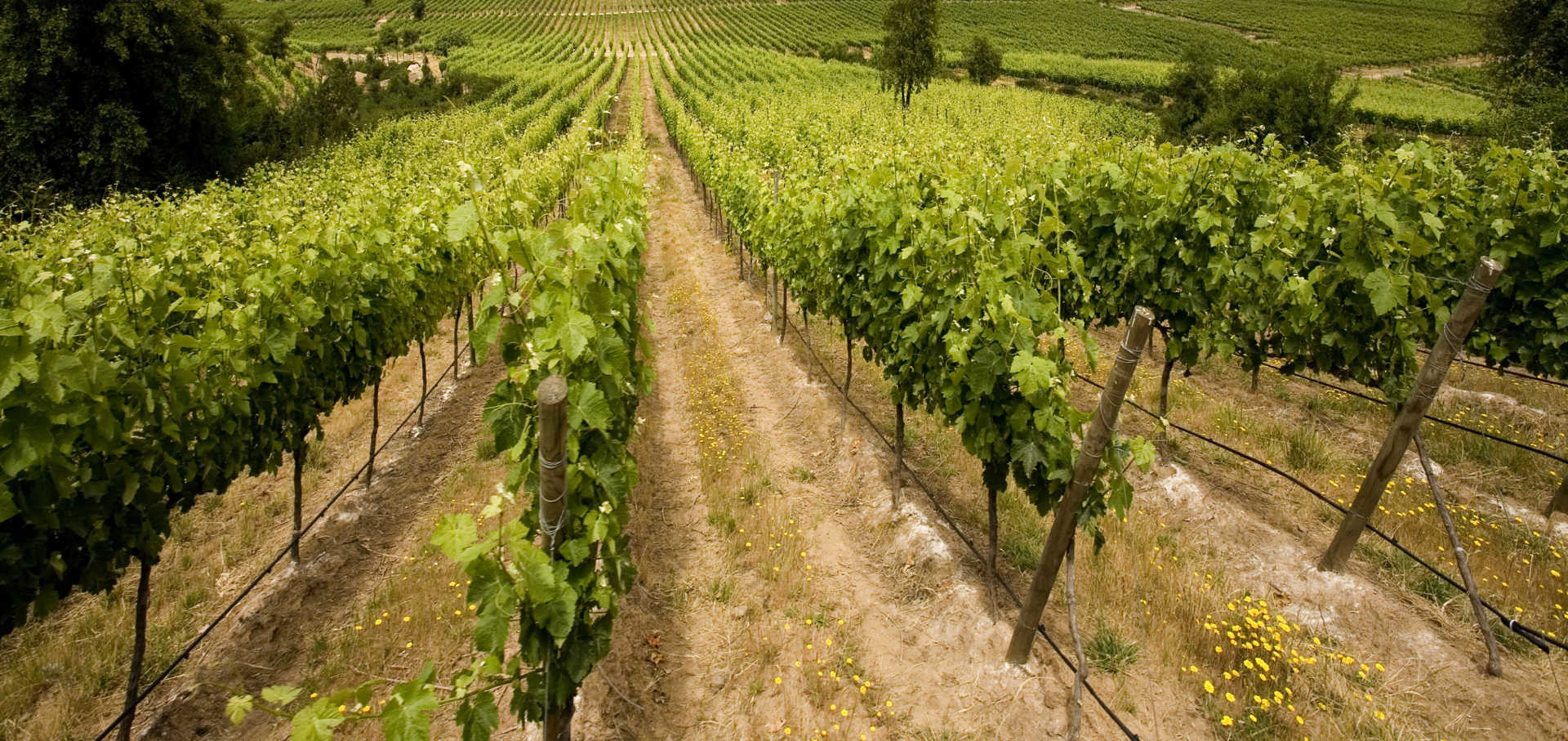Rogue Vine Grand Itata Tinto 2014
-
Wine &
Spirits -
Robert
Parker



Product Details
Your Rating
Somm Note
Winemaker Notes
The nose shows bright red fruits of raspberry and strawberry with rose petals and hints of fresh florest floor. The palate is defined by its tannin and acid structure that keeps the wine lifted, accentuating the fruit and leading to a racy finish.
Professional Ratings
-
Wine & Spirits
Cinsault adds its velvety texture to país, with its more herbal, earthy side coming together in this beautiful, simple and rustic blend. As refreshing as it is, this is a great red to pour by the glass or simply with meat empanadas, as country folk in Chile would do.
-
Robert Parker's Wine Advocate
The 2014 Grand Itata (red) is sourced from an old, dry farmed, head-pruned vineyard panted in 1960 on decomposed granite soils that is organically farmed. It's mostly Cinsault -- the most planted red grape in Itata -- with something around 5% of País. The bunches are destemmed, but they are careful not to crush the grapes that fermented with soft punching down in cement vats with indigenous yeasts, and only some 10% of the volume went in used oak barrels. It's a light-colored, perfumed, fragrant, light red with notes of decayed flowers (rose petals) and musky red fruit, clean and focused. The palate is light to medium-bodied with a silky texture, unnoticeable tannins, good freshness and balance; it is approachable and easy to drink. With time, the aromatic herbs and balsamic character of the wine are more evident. Pure Itata. If this is good, the 2015 I previewed (all in cement) can be even better.
Other Vintages
2021-
Robert
Parker
-
Wilfred
Wong






The Rogue Vine is a project made up of amigos Leonardo Erazo Lynch and Justin Decker. Both had the wish of making different wines, wines with character. To achieve this, they had to find different vineyards, different terroirs, and to make them in a different way. The forgotten old Bush vines almost falling out of steep granitic hills in Itala was the perfect spot to start this project. Once the viticultural center of a new world colony in the 1500’s, the Itata hills nowadays represent a forgotten viticultural region in Chile. The fact that the vines here in Itata can live 60-120 years means something, that they have found a balance with the environment and with the vigneron. Vineyards were planted under dryland conditions, with the bush vine as a trellising system and in the steep granitic hills of Itata. These conditions remain exactly the same 500 years later. Itata is a place in Chile where the spirit of the true Vigneron exists.
The Rogue Vine wines are the results of looking at things from another perspective. Because in some moments you realize that without noticing you have getting to know yourself a little bit better, that you don’t want to do the same as others do, and that the option is to follow your own path, your own way even though it can be difficult, that day you become a ROGUE.
They make wine because it’s an amazing transformation, to take something so natural, so real and such a part of the earth and transform it into an amazingly tasty beverage, that is incredible. That it goes beyond just a liquid refreshment and is not only a part of conversation but the guide we sometimes need to push the conversation and experiences forward and beyond. They really don’t make wine, they help create stimulating conversations about friendship, love, sports, construction projects, and a plethora of other things, and who wouldn’t want a hand in that if they could?

With hundreds of red grape varieties to choose from, winemakers have the freedom to create a virtually endless assortment of blended red wines. In many European regions, strict laws are in place determining the set of varieties that may be used, but in the New World, experimentation is permitted and encouraged resulting in a wide variety of red wine styles. Blending can be utilized to enhance balance or create complexity, lending different layers of flavors and aromas. For example, a red wine blend variety that creates a fruity and full-bodied wine would do well combined with one that is naturally high in acidity and tannins. Sometimes small amounts of a particular variety are added to boost color or aromatics. Blending can take place before or after fermentation, with the latter, more popular option giving more control to the winemaker over the final qualities of the wine.
How to Serve Red Wine
A common piece of advice is to serve red wine at “room temperature,” but this suggestion is imprecise. After all, room temperature in January is likely to be quite different than in August, even considering the possible effect of central heating and air conditioning systems. The proper temperature to aim for is 55° F to 60° F for lighter-bodied reds and 60° F to 65° F for fuller-bodied wines.
How Long Does Red Wine Last?
Once opened and re-corked, a bottle stored in a cool, dark environment (like your fridge) will stay fresh and nicely drinkable for a day or two. There are products available that can extend that period by a couple of days. As for unopened bottles, optimal storage means keeping them on their sides in a moderately humid environment at about 57° F. Red wines stored in this manner will stay good – and possibly improve – for anywhere from one year to multiple decades. Assessing how long to hold on to a bottle is a complicated science. If you are planning long-term storage of your reds, seek the advice of a wine professional.

Dramatic geographic and climatic changes from west to east make Chile an exciting frontier for wines of all styles. Chile’s entire western border is Pacific coastline, its center is composed of warm valleys and on its eastern border, are the soaring Andes Mountains.
Chile’s central valleys, sheltered by the costal ranges, and in some parts climbing the eastern slopes of the Andes, remain relatively warm and dry. The conditions are ideal for producing concentrated, full-bodied, aromatic reds rich in black and red fruits. The eponymous Aconcagua Valley—hot and dry—is home to intense red wines made from Cabernet Sauvignon, Syrah and Merlot.
The Maipo, Rapel, Curicó and Maule Valleys specialize in Cabernet and Bordeaux Blends as well as Carmenère, Chile’s unofficial signature grape.
Chilly breezes from the Antarctic Humboldt Current allow the coastal regions of Casablanca Valley and San Antonio Valley to focus on the cool climate loving varieties, Pinot Noir, Chardonnay and Sauvignon Blanc.
Chile’s Coquimbo region in the far north, containing the Elqui and Limari Valleys, historically focused solely on Pisco production. But here the minimal rainfall, intense sunlight and chilly ocean breezes allow success with Chardonnay and Pinot Noir. The up-and-coming southern regions of Bio Bio and Itata in the south make excellent Riesling, Chardonnay and Pinot Noir.
Spanish settlers, Juan Jufre and Diego Garcia de Cáceres, most likely brought Vitis vinifera (Europe’s wine producing vine species) to the Central Valley of Chile sometime in the 1550s. One fun fact about Chile is that its natural geographical borders have allowed it to avoid phylloxera and as a result, vines are often planted on their own rootstock rather than grafted.
